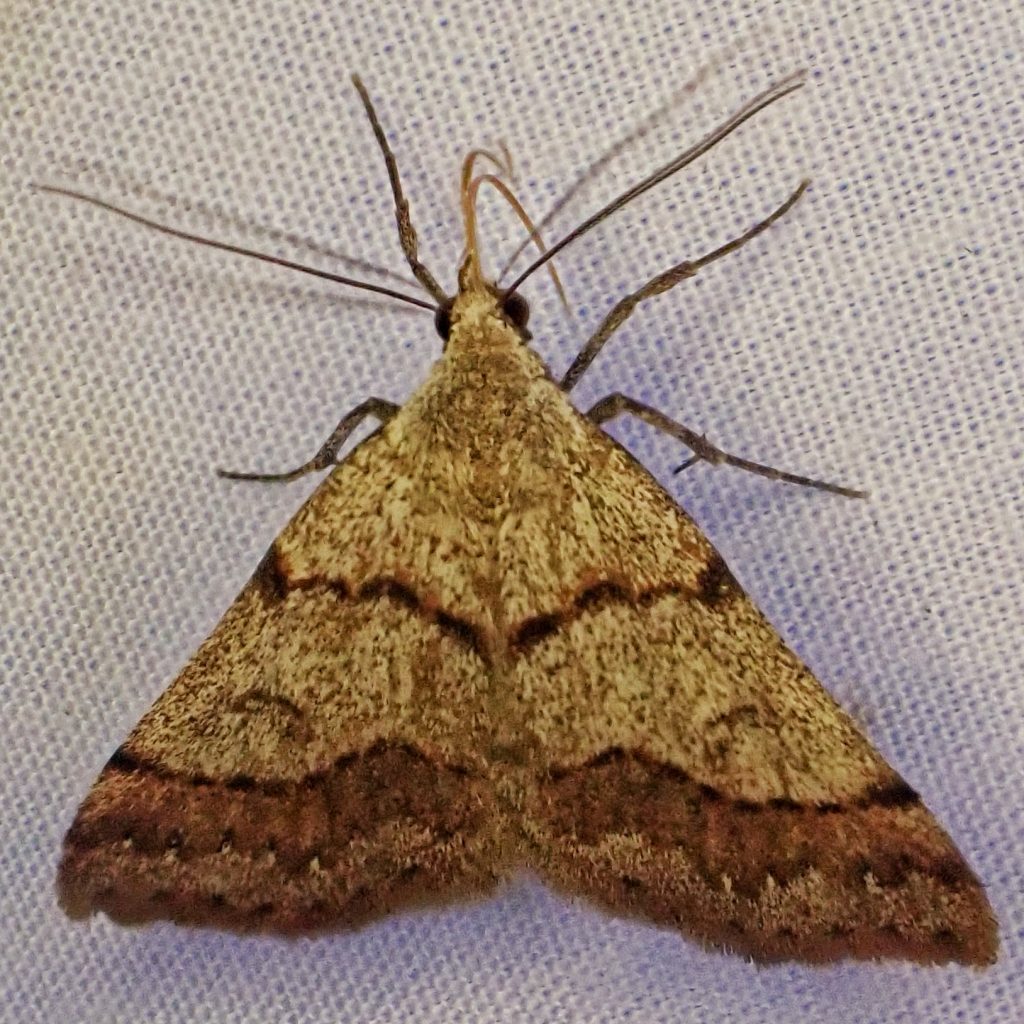
These handsome moths in the family Erebidae were far more common during my nights of urban mothing during moth week than they were when I was out in dense forests, though I did get a few during the spectacular ‘7th Night of Moth Week. The first time I found this species was several years ago at the dawn of my interest in moths, and I assumed then that they were a diurnal species, because I spooked up dozens of them walking through a few year old clearcut that was rife with lupines. I finally spotted a few before they flew and was able to get some photos, and my mothing mentor Carl Barrentine helped me identify them as the nocturnal species Hemeroplanis historialis. They are a highly variable species, but like the Cosmia praeacuta that I profiled a few days ago, they have a distinctive ante- and postmedial line configuration that makes them fairly easy to recognize.
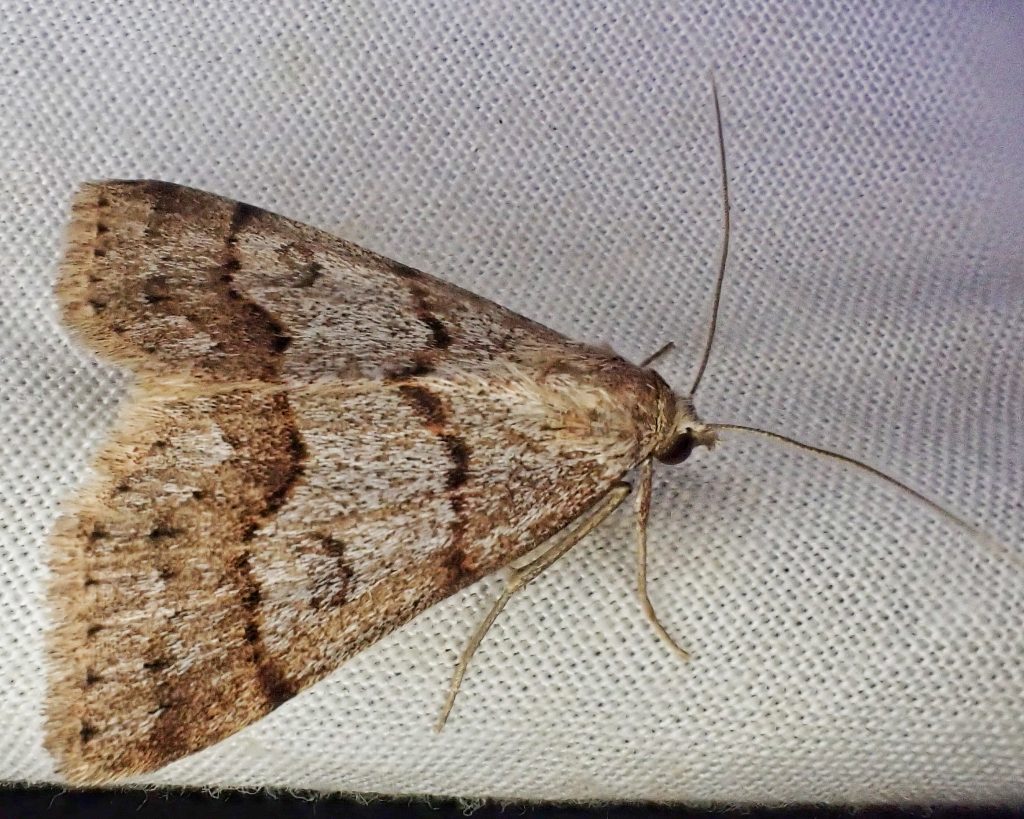
Description– Small (fw length 11-13mm) grey and reddish brown moth with a triangular forewing; transverse lines are variable but always conspicuous at the costa, and orbicular spot is lacking; Hindwings are brownish grey with a discal spot.
Similar species– “Although variable in color and pattern, this species can usually be recognized by the combination of small size, triangular forewing shape, and gray and red-brown color with dark marks at the costa at the antemedial and postmedial lines and relatively large reniform spot.”
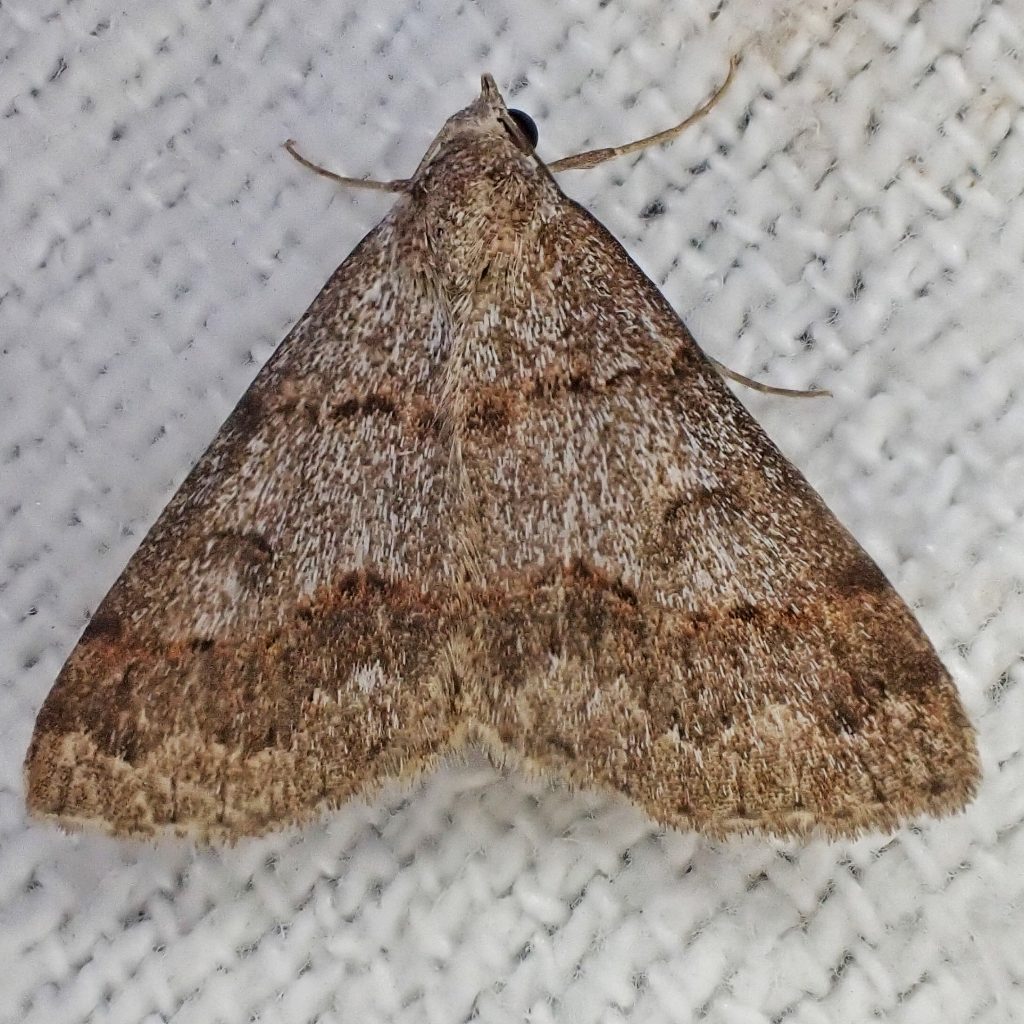
Habitat-“This species is widely distributed in forest habitats throughout western North America. In the Pacific Northwest, it is common to abundant in most forest habitats both east and west of the Cascades at various elevations. It is most common in open pine forests.”
Range– “This moth species is found in western North America. The range extends south through California and then east to western Texas outside of the Pacific Northwest…Hemeroplanis historialis occurs in forests throughout the Pacific Northwest as far north as southern British Columbia.” Observations · iNaturalist
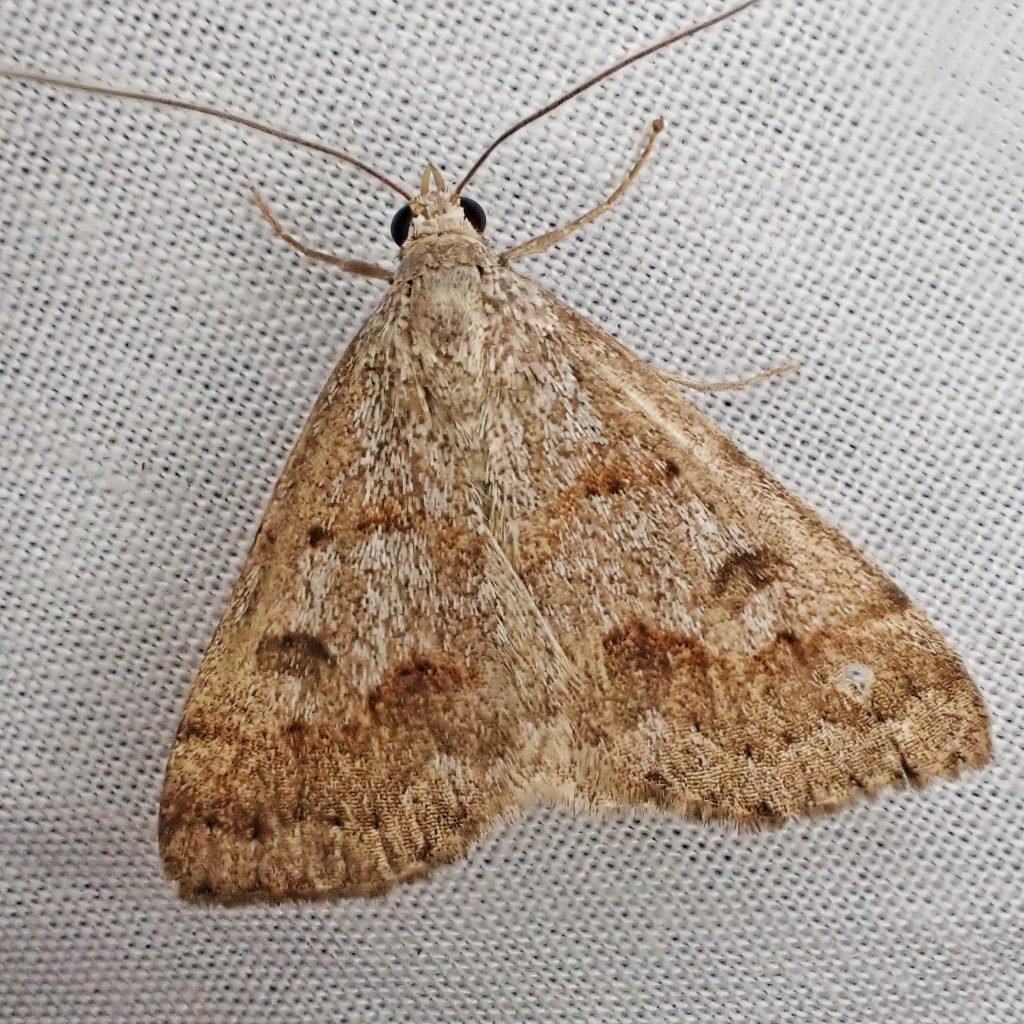
Eats– “No specific foodplant records are available for this species, but it is suspected to feed on legumes (Fabaceae).”
Eaten by– Presumably a host for parasitoids in Hymenoptera and Diptera, and probably preyed upon by insectivores of all classes, but I can find nothing specific for this species.
Adults active– “Adults of H. historialis have been collected from May until August, but most records are from June and July. It is nocturnal and comes to light. This species is sporadic but can be abundant.”
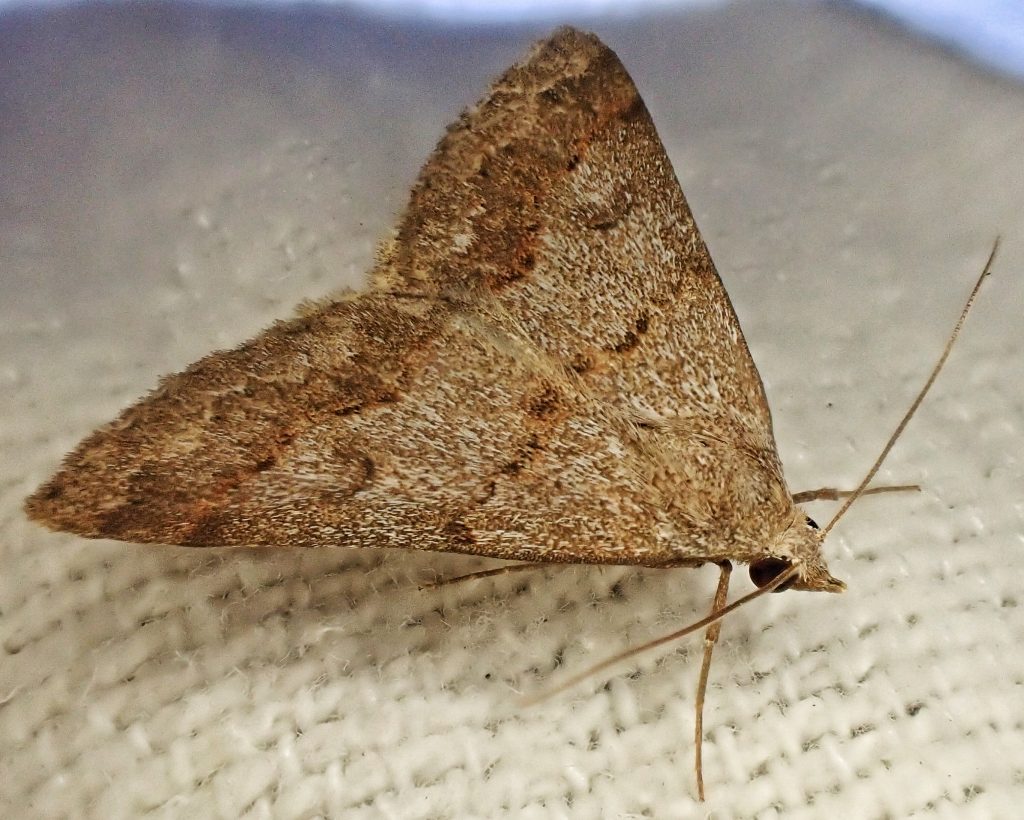
Life cycle– Seems to be univoltine, and probably overwinters as a larvae in diapause. “Larvae pupate underground in a cocoon (Southwest Moths).” Species Hemeroplanis historialis – Hodges#8472 – BugGuide.Net
Etymology of names– Hemeroplanis seems to be from the Greek words for ‘day wanderer’, so possibly some members of the genus are diurnal, although I cannot say for sure. The specific epithet historialis is from the Latin for ‘inquiry/narrative’, but I have no idea what that refers to.
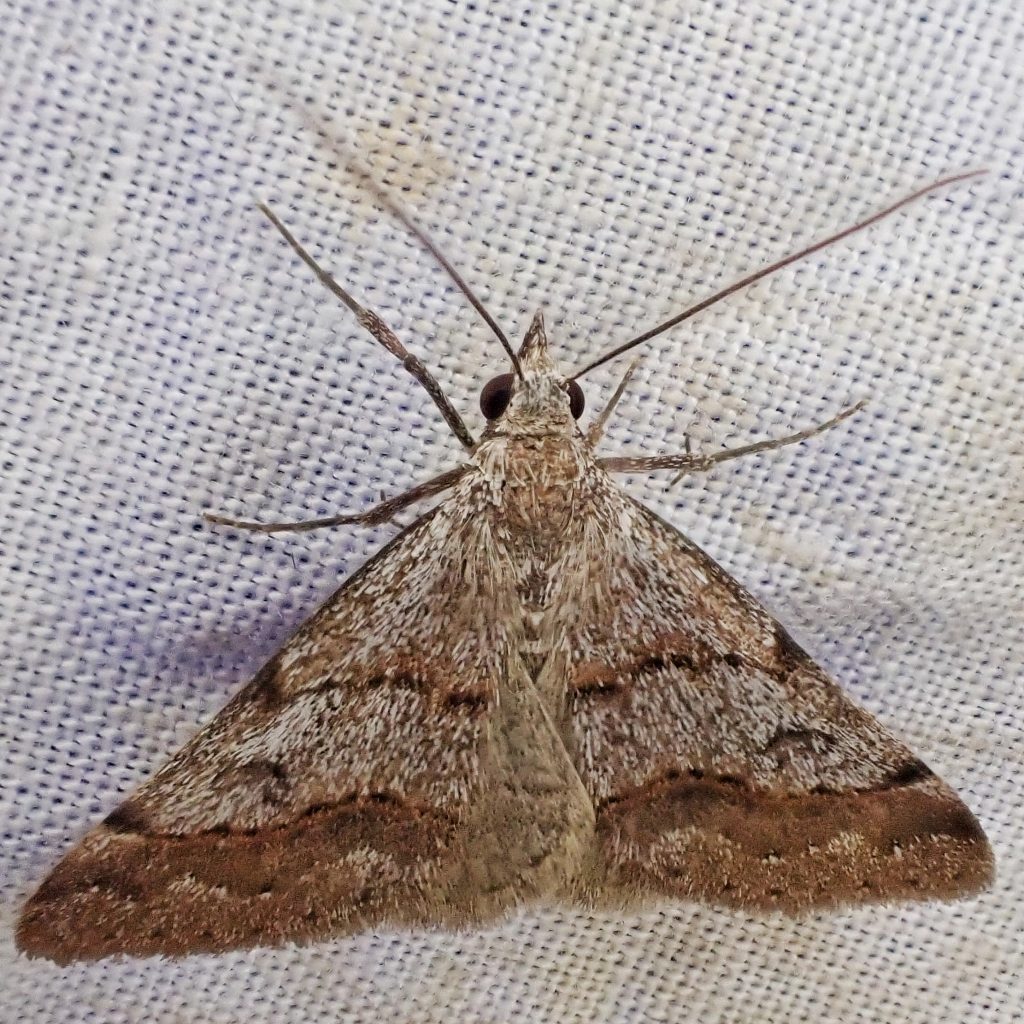
PNW Moths | Hemeroplanis historialis
Species Hemeroplanis historialis – Hodges#8472 – BugGuide.Net
http://mothphotographersgroup.msstate.edu/species.php?hodges=8472
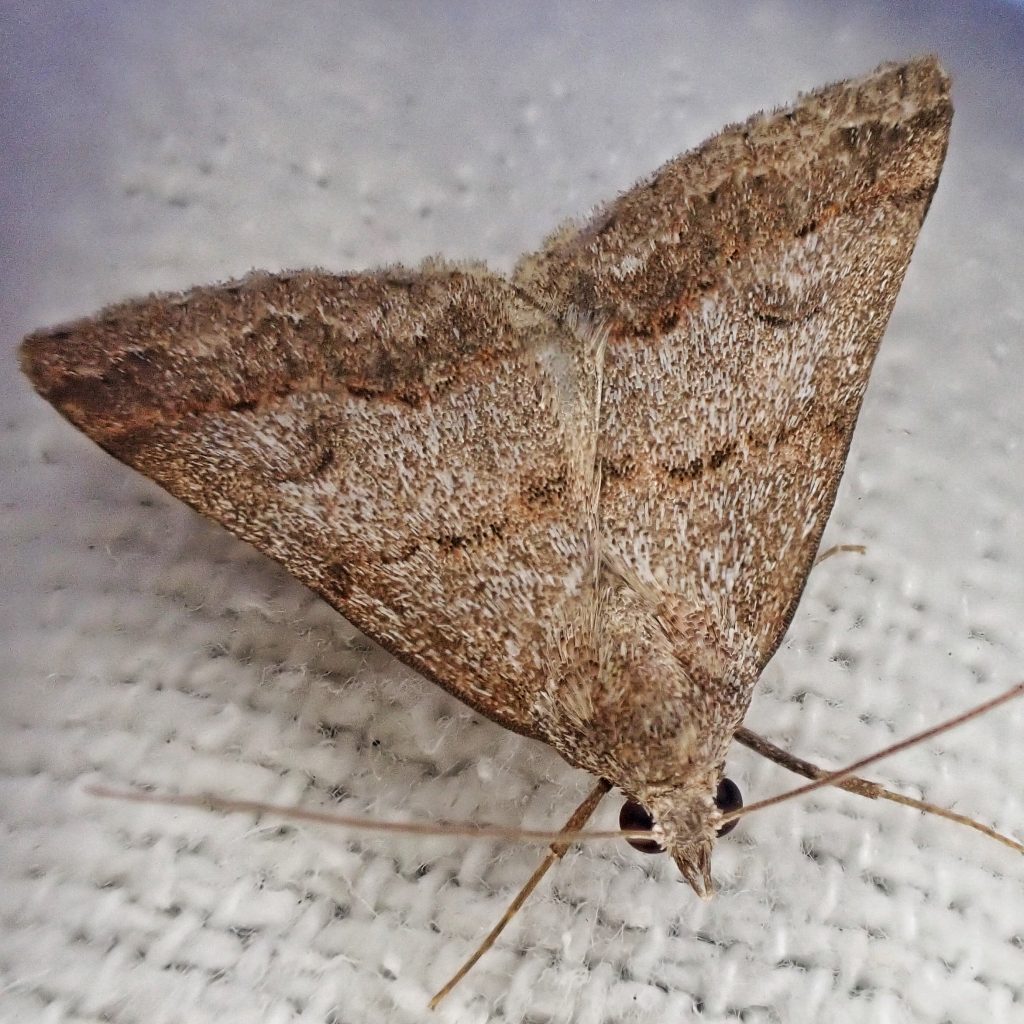
This is an especially handsome moth! Can you share what sort of camera/lenses you are using? I have a couple wasp pictures I’d like you to take a look at– what’s the best way to send to you?
I use an Olympus TG 5 and TG 6, with in camera photo stacking, Janet. It makes me look like a far better photographer than I am. You can send wasp photos to me at recreationalnaturalist@10000thingsofthepnw.com
But I’m no expert on wasps and they can be hard to identify from photos.